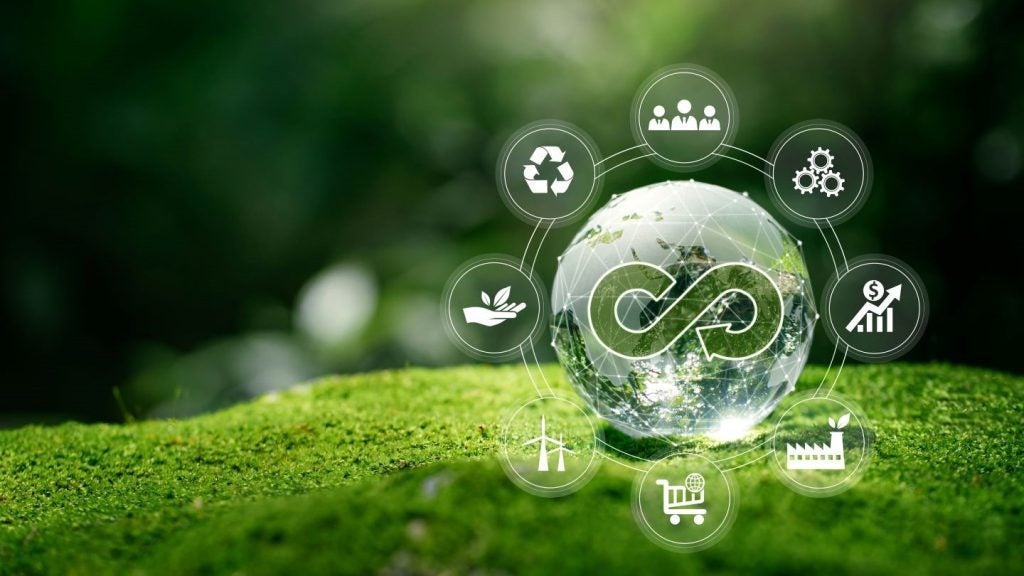The concept of the circular economy is rapidly gaining traction as industries worldwide seek more sustainable and efficient methods of production. For packaging professionals, the transition from a linear to a circular economy presents both opportunities and challenges.
As the focus shifts towards reducing waste, reusing materials, and recycling at every stage of the packaging lifecycle, the industry is witnessing a transformative change.
This article explores how the circular economy is becoming the new industry standard, highlighting its significance, the impact on packaging practices, and the steps professionals can take to embrace this shift.
Understanding the circular economy
At its core, the circular economy is a model that aims to minimise waste and make the most of resources. Unlike the traditional linear economy, which follows a 'take, make, dispose' approach, the circular economy is designed to keep products, materials, and resources in use for as long as possible.
This approach involves rethinking the entire lifecycle of packaging, from design and production to consumption and disposal.
For packaging professionals, the transition to a circular economy means re-evaluating how materials are selected and utilised. The focus is no longer solely on creating products that are durable and cost-effective but also on ensuring they can be reused, repaired, or recycled at the end of their life.
This requires innovation in material science, design processes, and production techniques.
Impact on packaging design and materials
The shift towards a circular economy has profound implications for packaging design and material selection. One of the primary considerations is the use of materials that are either biodegradable, easily recyclable, or made from renewable sources.
Packaging designers are increasingly turning to materials like bioplastics, recycled paper, and other sustainable options to reduce the environmental footprint of their products.
Design for recycling is another key aspect of the circular economy. Packaging professionals are now tasked with creating designs that facilitate easy disassembly and separation of different materials.
For example, a package made of multiple materials should be designed so that each component can be easily separated and recycled without contaminating the recycling stream.
This not only simplifies the recycling process but also ensures that materials can be recovered and reused effectively.
Moreover, the use of digital technologies in packaging design is helping professionals to innovate and create more sustainable solutions. Digital design tools allow for precise calculations of material usage, reducing waste during production.
Additionally, these tools can simulate the lifecycle of packaging products, helping designers identify potential issues and optimise their designs for circularity.
Changes in manufacturing and supply chains
The transition to a circular economy also necessitates changes in manufacturing processes and supply chain management. Traditional manufacturing often generates significant waste, but under a circular economy model, the goal is to reduce this waste to a minimum.
This can be achieved through more efficient production techniques, such as additive manufacturing, which creates products layer by layer, minimising material waste.
Supply chains are also being reconfigured to support circular practices. For instance, manufacturers are increasingly adopting closed-loop supply chains, where materials are continually cycled back into production after use.
This approach not only reduces the need for virgin materials but also cuts down on the waste generated at the end of a product's lifecycle. Packaging professionals need to collaborate closely with suppliers, manufacturers, and recyclers to ensure that materials can be returned to the production cycle efficiently.
Moreover, the shift to a circular economy has led to the rise of extended producer responsibility (EPR) schemes. Under these schemes, manufacturers are held accountable for the entire lifecycle of their products, including disposal and recycling.
This encourages companies to design products that are easier to recycle and to invest in infrastructure that supports the collection and processing of used materials.
Consumer engagement and behavioural change
The success of the circular economy also depends on consumer behaviour and engagement. Packaging professionals play a crucial role in educating consumers about the importance of recycling and proper waste disposal.
Clear labelling on packaging, for example, can guide consumers on how to dispose of products responsibly, ensuring that materials are recycled correctly.
Moreover, the rise of the circular economy has led to increased demand for packaging that is not only functional but also aligns with consumer values. Today’s consumers are more environmentally conscious and prefer products that contribute to a sustainable future.
Packaging professionals must consider these preferences when designing products, ensuring that packaging not only meets functional requirements but also resonates with consumers’ environmental concerns.
In addition to designing eco-friendly packaging, professionals need to foster a culture of reuse. Innovative packaging solutions, such as refillable containers and returnable packaging, are gaining popularity.
These solutions reduce the need for single-use packaging and encourage consumers to participate in circular practices.
The path forward for packaging professionals
As the circular economy becomes the industry standard, packaging professionals must adapt to this new reality. This involves embracing innovation, collaborating across the supply chain, and engaging consumers in sustainable practices.
The transition to a circular economy is not without challenges, but it offers significant opportunities for those who are willing to lead the change.
To stay competitive, packaging professionals need to prioritise sustainability in their designs and operations. This means staying informed about the latest developments in materials, manufacturing techniques, and consumer trends.
By doing so, they can create packaging solutions that not only meet the needs of today but also contribute to a more sustainable future.
The circular economy represents a significant shift in how we think about packaging and resource use. As this model becomes the new industry standard, packaging professionals have a unique opportunity to drive meaningful change.
By embracing circular principles, the industry can reduce its environmental impact, create value from waste, and build a more sustainable future for all.









